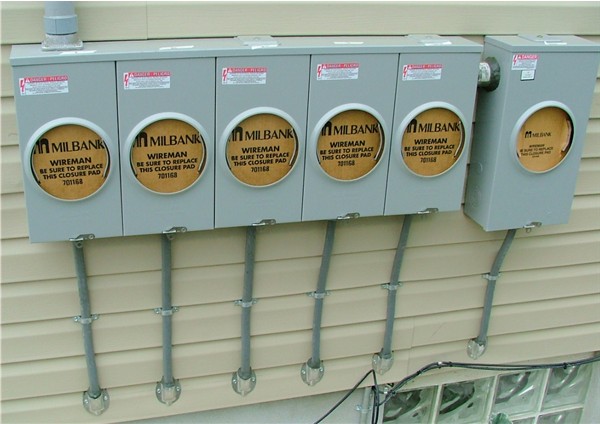Most of PEPCO installations are exposed SE cables
Most of PEPCO installations are exposed SE cables
In the DC suburbs, where PEPCO is the serving utility, most all new installations have type SE cable exposed like that shown in this thread. Even more so.
Consider that they want to install and make up the meter box, so the electrician merely leaves the SE "tails" hanging, and PEPCO does the rest.
Not satisfied with this type of installation, I had occasion to so a service upgrade in PG county a few years ago. I wanted to install the service drop in PVC conduit, and use type THHN/THWN conductors instead of the usual SE cable.
In order to do this, I had to go to the PEPCO service building in Forestville, and pick up the meter box, and sign off on a form for "customer installed" equipment.
I did the job, and the load side of the meter box was nippled directly thru the back of the meter box into the service panel. A nice installation, if I say so (modesty aside). Passed the PG inspection, and then guess what??
Yup, PEPCO said no way. They asserted that the installation violated one of their rules about the load side conductors should be emerging from the bottom of the meter box. Since I had installed a conduit from the back of the meter box, they would not connect it. In essence, I had to change my wiring methods to satisfy someone's bureaucratic need for consistency, it would appear.
I had to raise the meter box up, and use my conduit as a sleeve for a short piece of type SE cable, and terminate that thru a knockout in the bottom of the meter box. Once I did that, leaving a short section of SE cable exposed, they had no problem with the installation and completed the permanent connections.
I am still perplexed to this day why they wanted an inferior installation, with exposed SE cable, when a complete conduit system would be preferable, IMO.
FWIW, most of the installations we do here on Delmarva are using complete conduit systems, with the THHN/THWN conductors as outlined above. The local power companies never have any problems connecting these, and in fact seem to prefer it over the use of exposed SE cables.
The irony of this is Delmarva Power is owned by PEPCO.



